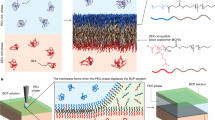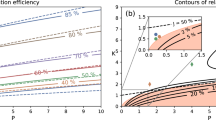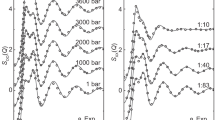Abstract
IN 1938 Blegen and Rehberg1 described a method for determining the osmotic pressure of biological fluids based on the measurement of the initial rate of outflow of water from one solution through a semipermeable membrane into another solution of somewhat higher osmotic concentration. As semipermeable membranes they used small collodion bags impregnated with copper-ferrocyanide2. The collodion bag is alternately filled with the unknown fluid and with a solution of sodium chloride of known strength, and is connected to a piece of capillary tubing (0·2–0·5 mm. internal bore) which is bent at right angles so as to form a longer, horizontal arm of about 15 cm. length carrying a millimetre scale. When the bag containing the unknown fluid or the sodium chloride solution is immersed in a sodium chloride solution of higher concentration, the meniscus begins to move, and the rate of movement, which is taken to be proportional to the concentration difference, is determined at intervals.
This is a preview of subscription content, access via your institution
Access options
Subscribe to this journal
Receive 51 print issues and online access
$199.00 per year
only $3.90 per issue
Buy this article
- Purchase on SpringerLink
- Instant access to full article PDF
Prices may be subject to local taxes which are calculated during checkout
Similar content being viewed by others
References
Blegen, E., and Rehberg, P. B., Scand. Arch. f. Physiol., 80, 40 (1938)
Blegen, E., Scand. Arch. f. Physiol., 81, 8 (1939).
Margaria, R., J. Physiol., 70, 417 (1930).
Author information
Authors and Affiliations
Rights and permissions
About this article
Cite this article
ASCHAFFENBURG, R. Determination of the Osmotic Pressure of Biological Fluids. Nature 151, 169–170 (1943). https://doi.org/10.1038/151169a0
Issue date:
DOI: https://doi.org/10.1038/151169a0



